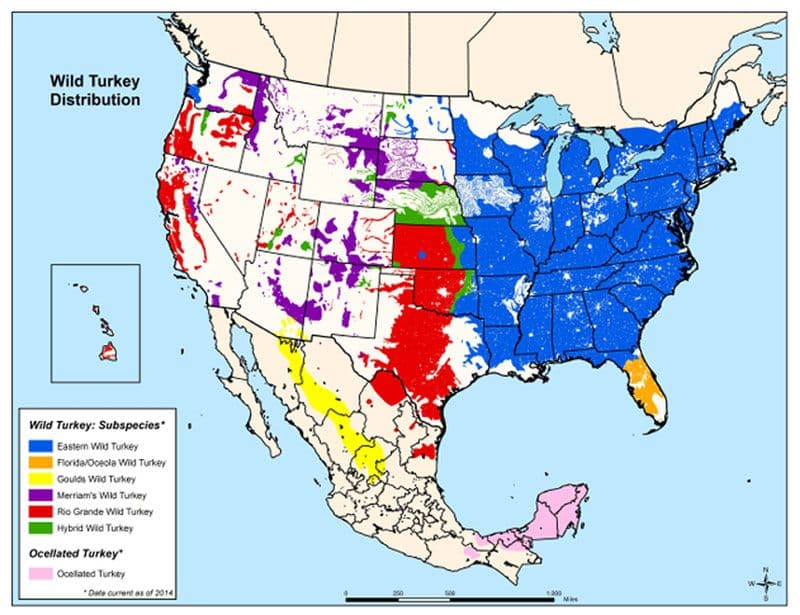Merriam, Rio Grande and Eastern Turkeys: What's the Difference


Michael Maroney
04/18/2023
If you have ever been around the world of turkey hunters, you may have heard people talking about the “Grand Slam” or the different types of turkeys that we have in the US and wondered how you or anyone else for that matter can tell them apart. Or what is the main appeal to hunting each species?
First off, all 4 species, Eastern, Merriam, Rio Grande, and Osceola turkeys all have their own characteristics. Whether their specific geographical location, appearance, or their habitat preference or their callability, they are each a bit different. In this post we will cover the 3 main types of turkeys that we chase in the western and central part of the US, Merriam, Rio Grande and Eastern turkeys. We break down the 3 main characteristics that separate the three species below.
Physical Appearance:
Merriam’s tend to have a bluish-grey head and neck and their feathers have white tips. Their fans typically have white bands on the tips of both the main fan and mid fan feathers. Rio Grandes usually have more of a bronze-green head and neck with feathers consisting of copper and bronze tips. Eastern’s are typically of darker overall color with a reddish-brown head and neck with black tips on their feathers and no white on the fans. In some areas where the geographic ranges overlap you may find hybrids of both Rios/Merriam’s and Rios/Eastern.

Habitat and Range:
Merriam’s have the smallest population and range of the 3 and are most common in the western and mountainous regions of the country, both in the Sierra Nevada and Rocky Mountains. They are most adapted to handle colder weather and prefer higher elevations throughout the spring and summer months, often following snow lines as the recede. Merriam’s can be found at elevations of up to 10,000 feet and prefer Ponderosa and Douglas fur forests. Rio Grande’s, having a large range, are typically found in the southern great plains of Texas, Oklahoma, Kansas and all the way up to Nebraska. They can be found in grasslands and savannah habitat. They are often associated with agriculture fields, large cottonwoods, and creek bottoms across the plains. Eastern turkeys, the most common in the country, have the largest range of turkey species in the US. They range from the east coast all the way to parts of the Midwest and into central Kansas. Their ideal terrain consists of hardwood and mixed conifer forests.

Behaviors and Hunting Tactics:
Merriam’s tend to be quieter and less receptive to calling or decoys than the other species due to their less aggressive behavior, especially during the spring season. They are still callable, however using the terrain to your advantage can be a great way to approach hunting these birds. Rio Grande’s are known for their aggressive behavior and vocal tendencies. They can be very receptive to calls and often travel long distances when the situation is right in the spring. Good set-ups, more calling and decoys can be very useful when hunting Rios. Eastern turkeys are the most weary and intelligent of the 3 species. Although they are the most populous and you may see large numbers on your hunt, the proper set up is key to being successful with good cover and scouting the travel of the birds prior to hunting.
All the three species that we see across most of the country are no doubt a blast to hunt. For a map of all the Infinite Outdoors turkey hunting properties visit Infiniteoutdoorsusa.com. Best of luck with your hunts this spring!